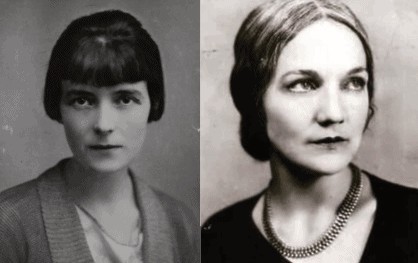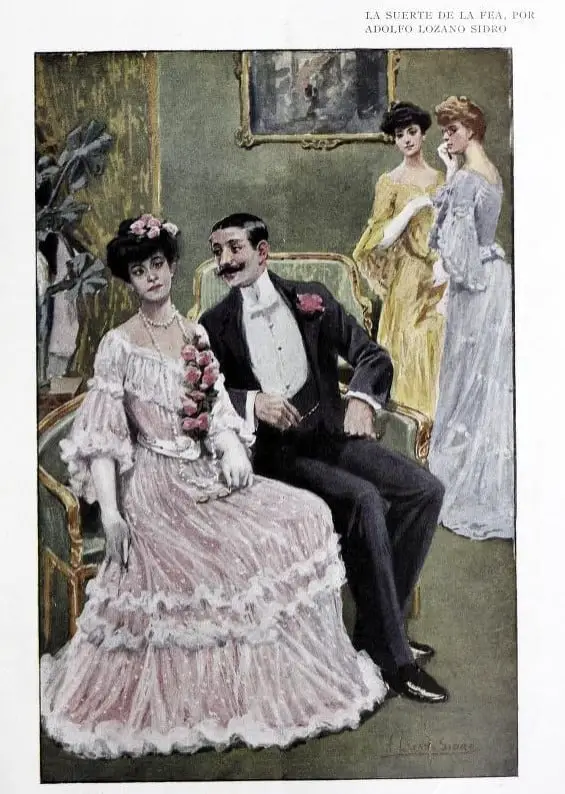“Flowering Judas” is the standout short story by Pulizer Prize winning Katherine Anne Porter, included in a collection published 1930 when Porter was 40. This short story reminds me of “A Dill Pickle” by Katherine Mansfield. Both stories are clearly about the way in which women are socially acculturated into providing emotional labour for men, but written in a time before such language existed to described the phenomenon. Instead, female short story writers showed it by dramatising such relationships in fiction.
I have compared Katherine Mansfield to Willa Cather, but Katherine Anne Porter seems to have much in common with Katherine Mansfield.
- Katherine Anne Porter was just two years younger than Katherine Mansfield.
- They both changed their names to Katherine, though neither was born Katherine. (Callie and Kathleen.)
- As a young woman, Porter was diagnosed TB but it turned out to be bronchitis. In one way they both had their mindsets affected by the looming spectre of this deadly disease. And Porter did have a brush with death (the flu).
- Both women are remembered as being duplicitous, rewriting their own histories, perhaps even to themselves. I have no hidden husbands. They just slipped my mind. — Katherine Anne Porter
- Both were woman short story writers, of course. Neither was especially prodigious in output, but both remain hailed as standout contributors to the literature of their respective countries.
- As young women they both spent time in Europe. Not only that, but both lived in a German pension.
- They were both involved in the arty, liberal crowd of their time and place.
- I think they even look quite similar.

Then again, the differences between them are just as stark:
- Porter was more politically active, but this may have been partly about geography rather than temperament. I have wondered what Mansfield’s thoughts were on women’s suffrage but we don’t need to wonder about Porter’s. Porter published a defence of women’s suffrage when she was 14, converted to socialism at the age of 15, and took on all social and political problems when she was 18.
- Porter grew up in a log cabin in Texas whereas Mansfield enjoyed an upper-middle class suburban lifestyle in Wellington, New Zealand, in which her family enjoyed high social status. Porter’s social status came later, though the fact of her being a white woman is what allowed her to enter the world of the Southern Belle.
- Porter’s simple roots may be why she was more politically active, supporting causes that aimed to alleviate human suffering and promote individual freedom. (American ideals have always been more about ‘freedom’, whereas New Zealand and Australian ideals have focused on ‘equality of opportunity’.)
SETTING OF “FLOWERING JUDAS”
Here is a timeline of the Mexican Revolution of 1920.
The author’s own life provides important context for this short story. I’m loathe to go down this path, especially when the author is female, because we’re inclined to assume greatness in female writers is only because they are writing autobiographically. However.
Katherine Anne Porter herself spent part of her time in America, part of her time elsewhere, and for a time, that ‘elsewhere’ was Mexico:
In 1919, Porter moved to Greenwich Village in New York City and made her living ghost writing, writing children’s stories and doing publicity work for a motion picture company. The year in New York City had a politically radicalizing effect on her; and in 1920, she went to work for a magazine publisher in Mexico, where she became acquainted with members of the Mexican leftist movement, including Diego Rivera. Eventually, however, Porter became disillusioned with the revolutionary movement and its leaders. In the 1920s she also became intensely critical of religion and remained so until the last decade of her life, when she again embraced the Roman Catholic Church.
Between 1920 and 1930, Porter traveled back and forth between Mexico and New York City and began publishing short stories and essays.
Wikipedia
It’s relatively safe to assume that most of Laura’s revolutionary activity described in “Flowering Judas” was inspired by Porter’s time as a revolutionary.
When Porter was in Mexico, she transformed from an idealist to a pessimist. This seems to be what’s happening to Laura.
Background: By 1930, Porter had suffered a life-threatening illness — not even counting the misdiagnosis of TB (which is a death sentence, and was for Katherine Mansfield in the same era). The TB turned out to be bronchitis but she did almost die from the flu. (The 1918 flu pandemic killed 50 million people, which made it more deadly than WW1, which claimed 16 million.)
As for her ability to see the underlying patterns that drive male-female relationships, by 1930 Porter had already been married and divorced twice. She first married very young (at 16, due to economic necessity) and this was a physically abusive relationship. By 40 years of age, Porter knew how relationships worked.
STORY STRUCTURE OF “FLOWERING JUDAS”
SHORTCOMING
Laura’s shortcoming is that she is a woman in a patriarchal culture, in which she is expected to subordinate her own feelings for that of a man. She also appears to be displaced — an American woman living in Mexico. She doesn’t seem to have the emotional support of long-term female friends. (She teaches English in a foreign country — in this respect she reminds me of Miss Brill from the Katherine Mansfield short story.)
Her loneliness is felt keenly:
She knocks at unfamiliar doors not knowing whether a friend or a stranger shall answer, and even if a known face emerges from the sour gloom of that unknown interior, still it is the face of a stranger.
Laura is also young — 22 years old. In psychological terms she is suppressing her emotions. Porter explains her psychology at times throughout her narration: She tells herself that throwing the flower was a mistake, for she is twenty-two years old and knows better; but she refuses to regret it, and persuades herself that her negation of all external events as they occur is a sign that she is gradually perfecting herself in the stoicism she strives to cultivate against that disaster she fears, though she cannot name it. Another way of putting that: She suppresses her own intuition, learned after a lifetime living as female, thinking that the ideals of the masculine stoicism will serve her better. Porter’s father was reportedly a big reader, and read a lot of rationalists. Porter probably learned the concepts of Stoicism from him. Modern Stoics are keen to point out that Stoicism isn’t limited to men, despite the original Stoics often drawing a distinction between ‘manly’ (ideal) and ‘effeminate’ (not ideal). This doesn’t change the fact that throughout recent history, the ideals of Stoicism have been coded as masculine: strength, fortitude, freedom from passions such as anger and petulance. So when the narrator of “Flowering Judas” writes that Laura is ‘not at home in the world’, this is because she is trying to bend herself to a world in which feminine ideals are intolerable.
DESIRE
Laura wants to run away from Braggioni but for the time being she can’t think of how this might ever happen. Still she sits quietly, she does not run. Where could she go? Uninvited she has promised herself to this place; she can no longer imagine herself as living in another country, and there is no pleasure in remembering her life before she came here. Mrs Braggioni is presented to the reader as a contrast to Laura — perhaps Laura’s future middle-aged self if things had gone slightly differently. Unlike Laura, Mrs Braggioni spends time crying, fully in tune with her own unpleasant emotions. Laura wishes she could do the same.
OPPONENT
Braggioni is the male embodiment of the early 20th century patriarchal system in which women were wholly subordinate to men. Braggioni is the socialist equivalent of a religious cult leader, surrounding himself in young women, objectifying them sexually (and probably more), all united by the common cause of extending an American form of socialism to Mexico.
Whether Porter did this mindfully or not, when describing Braggioni she inverts a trope most often applied to women when she compares the man to a cat: ‘When he stretches his eyelids at Laura she notes again that his eyes are the true tawny yellow cat’s eyes.’ (It’s most often women who are described as either cats or birds, or both, in fiction.)
Braggioni engages in psychological mansplaining, first telling Laura he feels sorry for her, then how her psychology will change as she matures, what her life’s purposes is, and then emphasises that the two of them are very much alike, in a romantic pattern well-recognised by many women, I bet.

New lovers are inclined to focus on their similarities, only much later noticing the differences. He’s trying to woo her sexuall. Laura understands this completely. She’s ahead of his game. She is more advanced in understanding this relationship than he is, despite the huge age difference. Comically, Braggioni ends his little monologue by talking about himself in third person, the way parents sometimes do to their young children: He shakes his head. ‘You, poor thing, you will be disappointed too. You are born for it. We are more alike than you realize in some things. Wait and see. Some day you will remember what I have told you, you will know that Braggioni was your friend.’ There’s a Seinfeld episode which makes fun of a guy called Jimmy. Jimmy only refers to himself in the third person. The writers of Seinfeld, like Katherine Anne Porter, observed that people who talk about themselves in third person are also likely to condescend in other ways. “Jimmy got himself some new shoes. Before Jimmy got himself these shoes, he played like you.” When [Braggioni] was fifteen, he tried to drown himself because he loved a girl, his first love, and she laughed at him. Margaret Atwood once observed, and it is now much quoted, that women are afraid of being killed; men are afraid women will laugh at them. Note that Katherine Anne Porter is making this same observation only decades earlier. Because Laura’s next opponent is the youthful version of Braggioni — a young man who stalks her: A brown, shock-haired youth came and stood in her patio one night and sang like a lost soul for two hours… Laura is (ill-)advised by a female acquaintance to throw him a flower (give him attention) and he will go away. In his book The Gift of Fear, Gavin de Becker advises the exact opposite when it comes to people who won’t leave you alone. Give them nothing, or they will keep coming back for more. Sure enough, that’s what happens and now Laura has a stalker. Though she doesn’t allow herself to feel afraid for her life, this is because her way of dealing with the situation derives from manly stoicism.
PLAN
To deal with living with an insufferably condescending, controlling man, Laura avoids him as much as she can:
She spends part of her days in Xochimilco, near by, teaching Indian children to say in English,’The cat is on the mat.’
During her leisure she goes to union meetings and listens to busy important voices quarreling over tactics, methods, internal politics.
BIG STRUGGLE
So, this is interesting, and Mansfield does the same thing in some of her stories. The Anagnorisis happens after a wholly internal Battle. There will be some outside symbol of a Battle. Here it is the cleaning of the gun. Laura’s internal Battle goes like this:
Laura peers down the pistol barrel and says nothing, but a long, slow faintness rises and subsides in her; Braggioni curves his swollen fingers around the throat of the guitar and softly smothers the music out of it, and when she hears him again he seems to have forgotten her, and is speaking in the hypnotic voice he uses when talking in small rooms to a listening, close-gathered crowd. Someday this world, now seemingly so composed and eternal, to the edges of every sea shall be merely a tangle of gaping trenches, of crashing walls and broken bodies. Everything must be torn from its accustomed place where it has rotted for centuries, hurled skyward and distributed, cast down again clean as rain, without separate identity. Nothing shall survivethat the stiffened hands of povertyhave created for the rich and no one shall be left alive except the elect spirits destined to procreate a new world cleansed of cruelty and injustice, ruled by benevolent anarchy: ‘Pistols are good, I love them, cannon are even better, but in the end I pin my faith to good dynamite,’ he concludes, and strokes the pistol lying in her hands. ‘Once I dreamed of destroying this city, in case it offered resistance to General Ortiz, but it fell into his hands like an overripe pear.’
These passages are the most difficult to write when composing a short story, I find. Short story writers use the same techniques time and again, which is perhaps precisely why it’s so difficult to make them original. Porter uses the following tricks:
- Though there is no fight happening, she’s using verbs which would describe an actual fight.
- She is making use of the miniature in fiction by stretching time out, with mention of ‘the eternal’. This makes the happenings of this particular story seem very small, and a piece in a mechanism much larger than ourselves. She’s giving us The Overview Effect by talking about the ‘edges of the sea’ — it’s like we’re viewing the Earth from space.
- The narrator then sums up in a sentence (‘Nothing shall survive…) Laura’s shift from idealism (her wish to eradicate poverty) to pessimism (the world runs on pistols and cannons).
- Porter uses a simile which indicates a fatalistic attitude. A modern fatalistic short story writer is Annie Proulx, so check out her stories for fatalism on steroids. Here, the imagery of an overripe pear dropping into a general’s hands indicate the political state of Mexico is inevitable. Individuals are powerless to stop him.
ANAGNORISIS
Any true work of art has got to give you the feeling of reconciliation—what the Greeks would call catharsis, the purification of your mind and imagination—through an ending that is endurable because it is right and true.
Katherine Anne Porter
The revelation for the reader (in which we are left to deduce for ourselves) is that Braggioni is interested only in power, not in the people he ostensibly fights for. When Laura tests him (to confirm her own anagnorisis), by telling him that a prisoner has tried to kill himself, Braggioni responds callously, as if the man’s life does not matter.
We realise (or this is my revelation, at least) that Braggioni is fighting on the side of ‘good’ (for freedom and equality) but he does it for the same power hungry reasons as the bad guys on the other side.
To symbolise Laura’s change of attitude, Porter shows us changing her clothes. ‘Serge’ is the fabric of fighting whereas the ‘white linen’ symbolises purity, normally. Is that what it symbolises here?
NEW SITUATION
Like Katherine Mansfield does in “Bliss” and various other of her short stories, Porter describes a tree in her final paragraph — a Judas tree ‘that bent down slowly and set her upon the earth, then to the rocky ledge of a cliff, and then tot he jagged wave of a sea that was not water but a desert of crumbling stone.’ Judas Tree is a common name for a flowering tree, Cercis siliquastrum from which Judas Iscariot is reputed to have hanged himself. “Flowering Judas” is the other common name for this tree, hence this short story is named after a tree. I didn’t know that when I started to read. Part of the legend behind this name and this lovely native goes back to Christian folklore. The mythology surrounding all Redbuds originally dealt with a species in the same Genus found in Judea and various other parts of the Middle East that is also called the Judas Tree, Cercis siliquastrum. The legend says that originally all Redbuds were tall, strong and stately trees that bore beautiful white flowers. However, when Judas Iscariot betrayed Jesus and committed suicide by hanging himself, the tree he chose to use was the Redbud. The tree was so ashamed of the role it played that forever more it would not grow big or strong enough to be used for hanging. The wood from then on would be brittle and the flowers, no longer pure, lost their white color and blushed instead. Thus we get the alternate name for Redbuds: the Judas Tree, the tree he chose for his death. Probably closer to the truth was that this tree grew throughout Judea and thus was called “Judea’s Tree” which was changed somewhere along the line to just being referred to as Judas Tree.
Capital Naturalist
In Laura’s mind, the dead prisoner Eugenio has metamorphosed into a tree. The ghost she imagines calls her a murderer and a cannibal, because she starts to eat his flowers.
Then she awakes from her nightmare and we are left to extrapolate what happens now, though if the reader is familiar with the entire legend of the Judas tree, we can happily extrapolate that Laura is ‘ashamed of the role she played in Eugenio’s death’.
Whether she stays in Mexico to be a part of the Revolution or whether she returns to America, she is no longer an idealist. She sees herself as part of the system of oppression, I guess.

